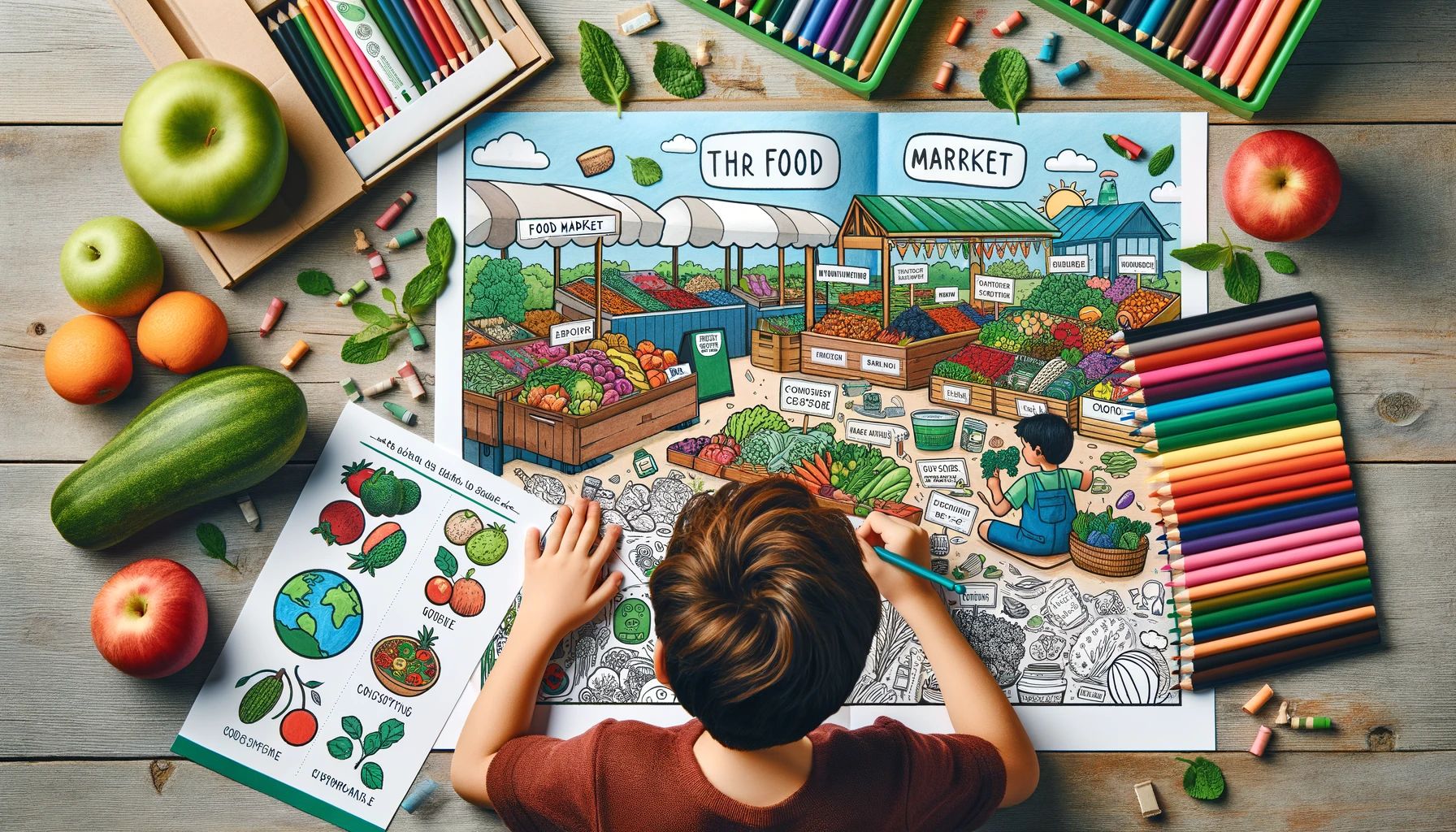In an era where processed foods are ubiquitous, teaching children about healthy eating habits and the importance of eco-friendly foods is crucial. One creative and engaging approach to impart these lessons is through coloring activities.
“Coloring the Way to Healthy Eating” explores how these activities can be used as educational tools to introduce children to the food market, eco-friendly foods, and the benefits of making healthy food choices.
Introduction to the Food Market
Start by explaining the food market concept, focusing on different types of markets such as farmers’ markets, organic food stores, and supermarkets.
Coloring pages could feature vibrant market scenes filled with fruits, vegetables, grains, and more. Accompanying discussions can highlight where food comes from, how it’s grown, and the journey from farm to table.
The Importance of Eco-Foods
Dive into the significance of eco-friendly foods—those produced in environmentally sustainable ways. Coloring pages can illustrate various eco-foods, including organic fruits and vegetables, and the practices that make them eco-friendly, like organic farming, composting, and water conservation.
These activities offer a platform to discuss the environmental impact of food choices and the benefits of eco-friendly practices.
Making Healthy Choices
Coloring activities can also focus on making healthy food choices. Pages could feature a variety of foods with labels that children can color according to how often they should be eaten (e.g., green for “eat a lot,” yellow for “eat some,” and red for “eat a little”).
This visual method helps children understand the concept of a balanced diet and the importance of including plenty of fruits, vegetables, and whole grains in their meals.
Interactive Projects
Suggest interactive coloring projects involving real-life applications, such as planning a healthy meal or designing an eco-friendly garden.
Children can use their colored pages to create a menu for a week’s worth of meals or to map out a garden with fruits, vegetables, and flowers. These projects encourage kids to apply what they’ve learned about healthy eating and sustainability in a fun and creative way.
Tips for Parents and Educators
Offer practical advice for parents and educators on incorporating these coloring activities into everyday learning. This could include setting aside time for coloring and discussions, visiting local farmers’ markets or gardens for inspiration, and creating a “healthy eating coloring book” as a long-term project.
Encourage adults to participate in the coloring activities, fostering a shared learning experience and reinforcing the lessons at home and in the classroom.
Coloring activities for younger children will offer a unique and effective way to educate children about the food market, eco-foods, and making healthy choices. By combining the tactile joy of coloring with the educational content about nutrition and sustainability, children can learn important life lessons in a fun and engaging manner.
“Coloring the Way to Healthy Eating” promotes awareness of healthy eating habits and environmental sustainability and nurtures creativity and critical thinking, laying the foundation for informed and conscious consumers of the future.
Source: ESLE

